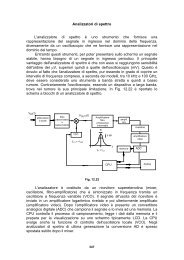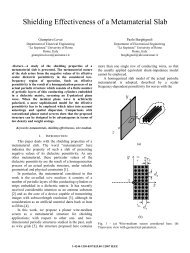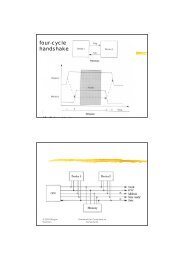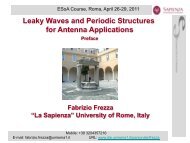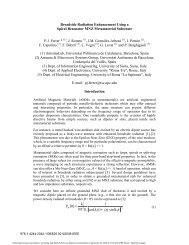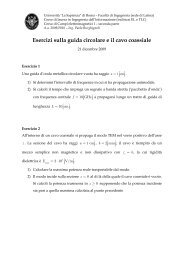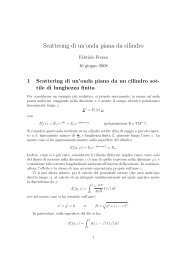Introduction to Traveling-Wave antennas.pdf
Introduction to Traveling-Wave antennas.pdf
Introduction to Traveling-Wave antennas.pdf
Create successful ePaper yourself
Turn your PDF publications into a flip-book with our unique Google optimized e-Paper software.
9 <strong>Introduction</strong> <strong>to</strong> TWAFigure 11: Equivalent Transverse Transmission Network of Ridge guidescanned in elevation by varying the frequency. Scanning in the cross plane, andtherefore in azimuth, is produced by phase shifters arranged in the feed structureof the one-dimensional array of line sources. The radiation will therefore occur inpencil-beam form and will scan in both elevation and azimuth in a conical-scanmanner. The spacing between the line sources is chosen such that no grating lobesoccur, and accurate analyses show that no blind spots appear anywhere.The described arrays have been analyzed accurately by unit-cell approach thattakes in<strong>to</strong> account all mutual-coupling effects. Each unit cell incorporates an individualline-source antenna, but in the presence of all the others. The radiatingtermination on the unit cell modifies the transverse equivalent network. A key newfeature of the array analysis is therefore the determination of the active admittanceof the unit cell in the two-dimensional environment as a function of scan angle.If the values of β and α did not change with phase shift, the scan would beexactly conical. However, it is found that these values change only a little, so thatthe deviation from conical scan is small. We next consider whether or not blind spotsare present. Blind spots refer <strong>to</strong> angles at which the array cannot radiate or receiveany power; if a blind spot occurred at some angle, therefore, the value of α wouldrapidly go <strong>to</strong> zero at that angle of scan. To check for blind spots, we would thenlook for any sharp dips in the curves of α k oas a function of scan angle. No such dipswere ever found. Typical data of this type exhibit fairly flat behavior for α k ountil thecurves drop quickly <strong>to</strong> zero as they reach the end of the conical scan range, wherethe beam hits the ground.European School of Antennas




